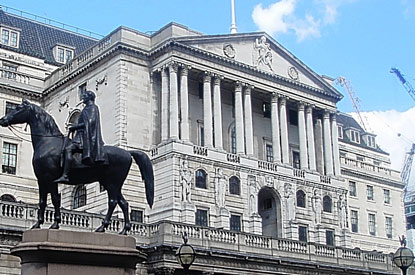The Bank of England has warned that a sharp rise in consumer debt could pose a threat to the UK economy. In a speech to the University of Liverpool’s Institute for Risk and Uncertainty, the Bank’s financial stability director, Alex Brazier, told the audience that lending standards could potentially enter a “spiral of complacency”. “Household […]
 The Bank of England has warned that a sharp rise in consumer debt could pose a threat to the UK economy.
The Bank of England has warned that a sharp rise in consumer debt could pose a threat to the UK economy.
In a speech to the University of Liverpool’s Institute for Risk and Uncertainty, the Bank’s financial stability director, Alex Brazier, told the audience that lending standards could potentially enter a “spiral of complacency”.
“Household debt – like most things that are good in moderation – can be dangerous in excess,” he said.
“Dangerous to borrowers, lenders and, most importantly from our perspective, everyone else in the economy.”
Consumer debt has soared in the past year, with outstanding car loans, credit card balance transfer and personal loans increasing by 10%, compared to household incomes which have risen by only 1.5%.
Brazier said that lending standards could go from responsible to reckless very quickly.
“The sorry fact is that as lenders think the risks they face are falling, the risks they – and the wider economy – face are actually growing,” he said.
Brazier said that there were signs of “boundaries being pushed” in mortgage lending, but developments were less striking than those in consumer debt and car finance.
Competition for business has led to increased lending at higher loan-to-income multiples, with the share of lending at four times the borrower’s income rising from to 26% from 19% over the past two years.
“In part this reflects a lengthening of mortgage loan terms,” said Brazier. “In the past two years the proportion of new mortgages with terms of 30 years or more has risen to more than a third of all new mortgages. That lowers initial monthly payments on a given mortgage but means the debt hangs around for longer, in some cases beyond possible retirement ages.”
He added that fierce competition for business has shown up in reduced fees for those taking out a new mortgage. Half of mortgages were extended without fees in the first part of 2017 – four times the rate in 2011.
Earlier this month, the Bank told Britain’s lenders that they must set aside £11.4 billion of capital in the next 18 months to make them more resilient to the risk of rising consumer debt.
It said it would increase the counter cyclical capital buffer from 0% to 0.5% and suggested this will likely go up to 1% in November.
The Bank confirmed that it was tightening its mortgage affordability rules.
In its latest Financial Stability Report the Bank said lenders will now be required to check that a borrower can pay back their loan at a rate of 3% above the standard variable rate.
Under the previous rule introduced in 2014, banks and building societies would test borrowers by checking how they would react to an increase of 3% above the base rate.














